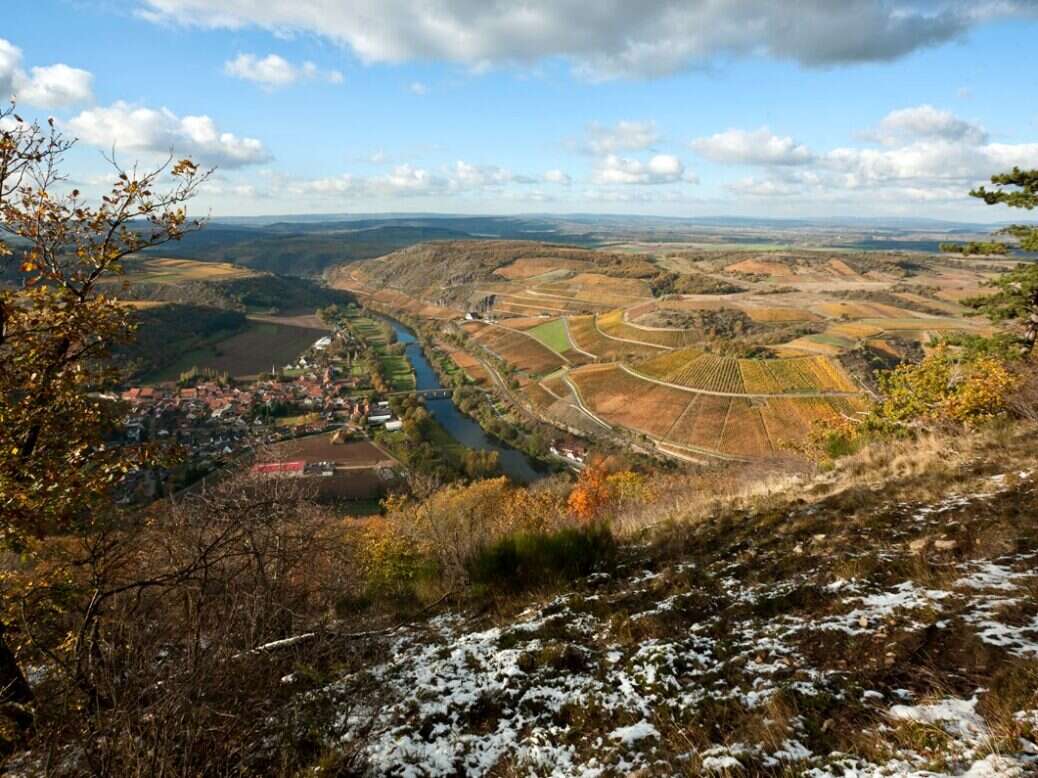
“What happens when a vintage that pulses urgently meets a domain whose wines typically exhale calmly,” asks Terry Theise as he tastes the 2021 wines from the great Nahe estate of Dönnhoff.
I’d always try to climb the Lemberg hill before I arrived at the winery. It’s a good stiff walk, about 30 minutes, steep but not punishing, and when you reached the top the entire world was below you. It showed the Nahe as a quiet cozy nugget in its secretive little valley, surrounded by a great expanse of landscape. Something about Dönnhoff’s wines is encapsulated in that view, something large and small and introverted and inexplicable. All that, plus I’d arrive with flushed cheeks and lungs full of fresh air.
Today I took a walk in the Arnold Arboretum, near where I live. I’m tasting the wines at home, but I wanted to breathe in the world. It is a day that, if you wrote it into a novel, nobody would believe you. Almost June 1st, and we have one of those days with the wind off the Atlantic, which is nine miles from where I now sit, and which offers up a breezy cool day you’d be thrilled to get in March. Everything seemed happy, we’d had rain, you couldn’t inhale without smelling something wonderful, and I saw turtles sunning themselves, and one solitary (and unusually shy) wild turkey, and any number of intrepid birds who were far too busy to concern themselves with my proximity.
I tasted these with Helmut back in May 2022, and was quietly blown away. I have most of them again here; missing are the basic estate Riesling Trocken, the totemic Leistenberg Kabinett, the beloved Kirschheck Spätlese, plus the various not-really-ancillary wines outside the Riesling family. I will … sigh … make the best of it.
The 2021 vintage is not precisely congruent with my own sense of Dönnhoff. It is manifestly a success and there are many superb wines, but its personality quirks are only the most sporadic visitors to the overriding “type” of wines one usually finds here.
I’ll explain—or try to. Dönnhoff wines hinge upon a paradox. Their essential nature is one of repose, with a kind of crystalline serenity providing a calm backdrop for the most densely profound expression of sheer information, so that one doesn’t fathom how a wine with so much to say can also seem so calm.
To bring this about requires a virtuosity with texture, and the wines are miracles of evanescence without ever being vague or indefinite. They walk the earth in a different gravity than you or I do. And then comes 2021, a vintage of quite some adamance, a vintage that pulses urgently meeting a domain whose wines typically exhale calmly. What will happen? Let’s see.
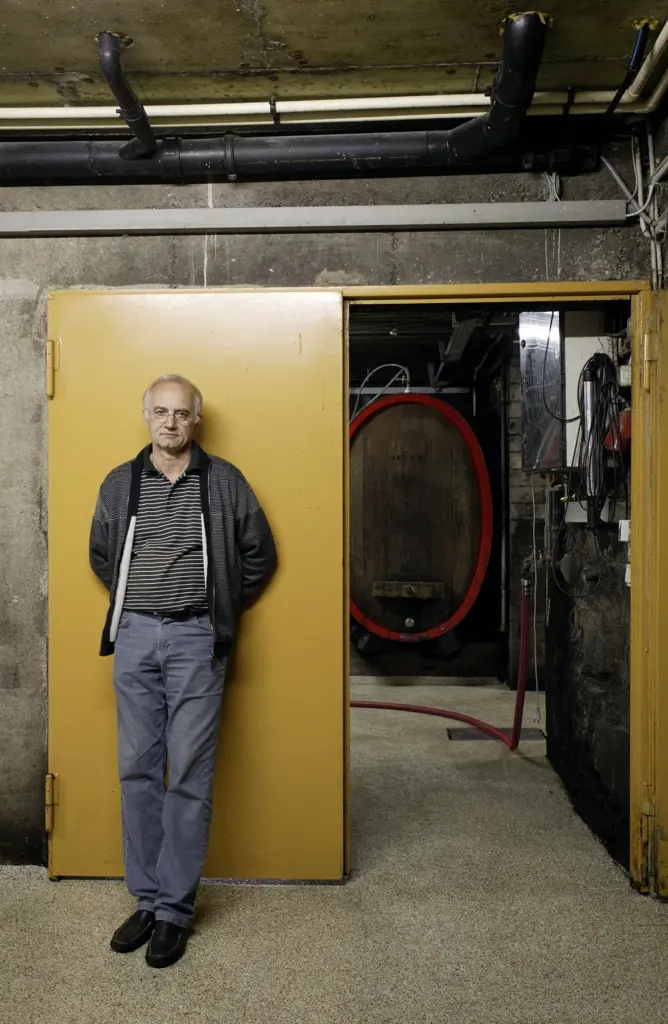
2021 Kreuznacher Kahlenberg Riesling Trocken
VDP Erste Lage. These wines tend to be clement, with a sort of semolina-sweet umami that harkens to the “wet-cereal” thing I get from loess-grown Rieslings and GVs.
It being a ’21, it’s more compact than its typical norm, but it’s also longer and more animated. It smells intricate, almost mysterious, from the Jancis glass. This isn’t a vintage for demure wines; nor is it aligned with Dönnhoff’s signature crystalline stillness of texture. So, what is it? The “calm” vineyard in the “jittery” year … if it loses a measure of repose it gains several measures of minerality and dialogue. It reveals a lovely herbal note—sorrel and bay leaf—and it does what few ‘21s seem to be able to do—it finishes entirely dry without anything sour or caustic from excessive acidity. The tertiaries aren’t loud but they linger.
It opens impressively with air. And like many of Dönnhoff’s wines it has the ur-Riesling thing they do, as though some deity had said “Make me a paradigm of this grape you seem to love so much.” Personally I can spare a dime for a paradigm.
It fluffs out over the days but never entirely escapes the sardonic finish of so many dry ‘21s. It simply inheres to the vintage, at least in the northerly regions, and all things being equal, the “big” wines—the GG types—are most likely to rise above it.
Tasting it now for the fifth time, it both “fluffs out” and maintains its finishing asperity, but what impresses most is the deepening in the mid-palate. It’s still a “small” player in the Dönnhoff canon—though it gains from warmer vintages—but it’s by no means slight or insignificant.
2021 Tonschiefer Riesling Dry Slate +
Yes I have jiggled the usual sequence, because this wine always over-delivers and it’s also a bundle of energy, which can make a wine like the Kahlenberg seem overly sedate if you taste it after. I have often written that this wine and its sweet sibling the Leistenberg Kabinett are the totemic Rieslings from Dönnhoff.
I don’t know how he does it, or if there’s actually any “doing” entailed, but somehow this wine manages to be irresistibly clamorous without being hyper or insistent. Helmut sometimes compares his wines to classical music, but this guy is slammin’ rock and roll.
It’s always been excellent but Cornelius has made it even better, and again, how in the world did they take a wine that’s already high-pitched in a vintage that can tend to be screechy and make something so giddy and beautifully wacked out? As if that weren’t enough, it’s also a wine that explains what is meant by “mineral” as well as any I’ve ever had.
It has all the signal virtues of the estate: impossible clarity allied with considerate texture allied with vivid energy allied with so much sheer information you feel like you never tasted wine before. (Or else you’re stoned, but that’s another story.) (I am not stoned, though I am definitely “mineraled.”)
Like many ‘21s, it needs all the fruit it arrived with, and it grew a bit steely over the days. Yet even so, it’s a seductive sort of steeliness, and it is easily mitigated by using my (tulip-shaped) Spiegelau.
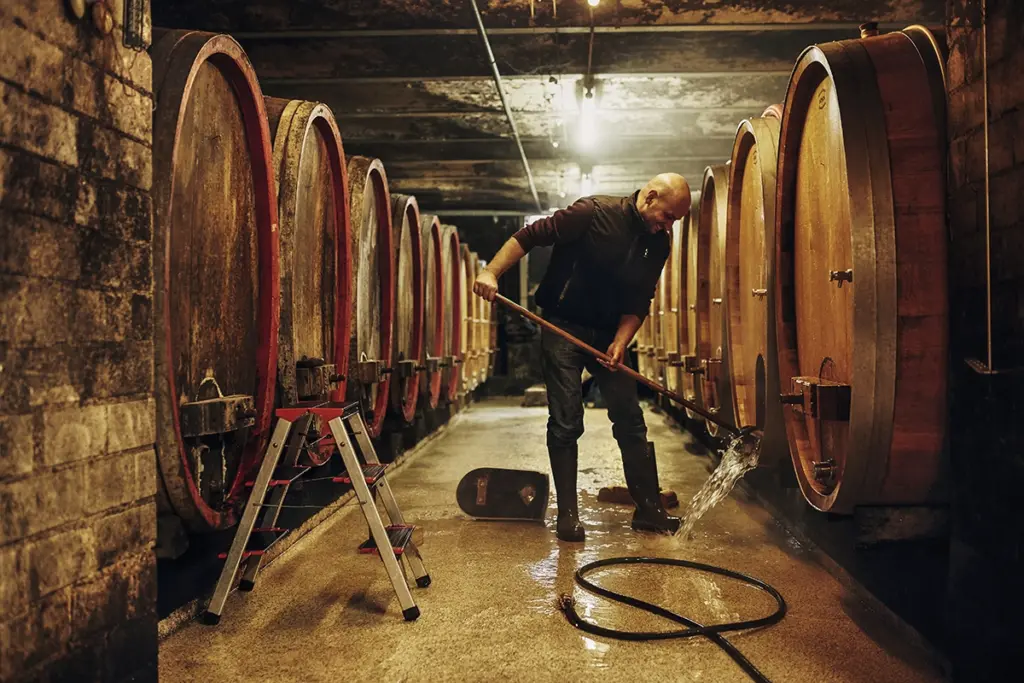
2021 Roxheimer Höllenpfad Riesling Trocken
VDP Erste Lage, and do say hi to Satan sitting atop a cask, on both the main label and the lack label. The name means “path to hell.”
Sandstone equals charcuterie, and we see it here. The wine, which can be a teeny bit clunky in hot years, is just twerking like a maniac here. It also has that acorn aroma of Iberico pork. If the site was ever going to offer either minerality or “polyphony,” it would do so in a year like ’21, yet I can’t go farther because I have a “90% healthy” bottle with an intrusion of TCA. Alas!
2021 Höllenpfad im Mühlenberg Riesling GG +
No devil icon here; Lucifer don’t truck with no GGs. Mühlenberg is a “Gewann” (parcel) in the larger single-site, and its wine is as specific as the “Musigni” bottlings from Clos Vougeot.
For something essentially savory, this is implosively and remarkably gorgeous. If fruits or flowers emerge I’ll be eager to tell you, but right now it’s a wine that makes you salivate with appetite.
Would “rose hips” be too far fetched? There’s also the flavor of Wu-Yi oolongs, especially the (hard to find) aged ones. I wish you knew what I was talking about. A soul that vibrates to wine will often vibrate to tea as well.
’21 has suppressed some of this wine’s umami, but in return it has heightened both herbal and spice nuances. A hint of clove isn’t too outlandish to observe. Alongside the flavor of yellow beets there’s the tang of their greens. An echo of faded flowers is discernible. You can call it an “elevated savory-ness” if you want, a refinement of something inherently direct—not simple, just direct. You’ve taken something that’s completely satisfying and made it interesting.
2021 Krötenpfuhl Riesling GG ++
Historically considered the best vineyard in Bad Kreuznach, it’s only recently been cast as a GG. It has 12.5% alc in contrast to the 13% prevailing among its fellows.
This is both sensational wine and also an improbably superb ’21—not because it is superb but because of the way it’s superb—juicy, savory, almost creamy, and (in the best way) weirdly complex. How so? Because it’s an earthy complexity yet it is also refined. It isn’t explicitly mineral but it behaves with similar articulation.
It’s the best Krötenpfuhl they have made, which makes it the best I’ve ever tasted, or can remember. Along with the ’21 shimmer there’s a raw pretzel dough flavor, and along with that there’s a complicated side-note of brioche and French-toast, and along with all that there’s a comfortable limpidity and tinkling melody that’s pure Dönnhoff.
2021 Dellchen Riesling GG +
Can 2021 make articulate this most obscure and riddlesome of vineyards? Well, yes and no.
You hear about vineyards whose wines “need time” and usually it’s word-noise, but I have never tasted a young Dellchen that was anything but hidden. Is Riesling too subtle for it? (Perish the thought, but some rascal ought to grow Scheurebe there, just to fuck with us.)
The aromas are strong and expressive. And then on the palate they veer off into the forest. Dellchen! In ’21 it is intensely savory, intensely mineral, and intensely allusive. You taste everything through a scrim. You surmise the presence of what you’d call “flavor” but it doesn’t register as things you can name.
Come on, Jancis glass—show me something! Is there a whisper of slate, an insinuation of lebkuchen? There’s a lot of a lot-ness, but does it show a face, or is it a doughy spectre, dancing always just where you can’t grasp it?
Unlikely as it sounds, there’s an odd affinity with some Pinot Noirs from Champagne. Wines that won’t explain themselves. But I should explain.
The wine has a ton of expressiveness, it has force and adamance, but it offers very little that can be encapsulated into what we call a “tasting note.” It offers a sort of principled resistance to description. Fine with me!
2021 Felsenberg GG ++
It only says Riesling on the back label.
An apex among porphyry-grown Rieslings, and in 2021 the fragrances are deranged.
It seems to have less density than Dellchen, but it also has more clarity; it is a kite more easily flown. It shows all the juju of terroir, about which I have spent decades trying to write half decent notes.
Accordingly, I’ll keep this one brief. The fragrance couldn’t be more beautiful. The palate has a lift and transparency that’s soaring and aerial and perhaps the tiniest bit slight. Yet it also shows the piquancy you might expect to find from Kupfergrube.
A remarkable wine, numinously melodic and with perhaps a slight suppression of the underlying harmonies. I love it entirely, regardless of whether I’d call it “great.” On one hand, sure it’s a little “light,” but on the other hand look how high it bounces on the trampoline.
For my final tasting I used the Spiegelau in order to push the wine together rather than to pull it apart in order to “examine” it. The effect is to implode the salty minerality in a sort of introverted ecstasy of angular strength.
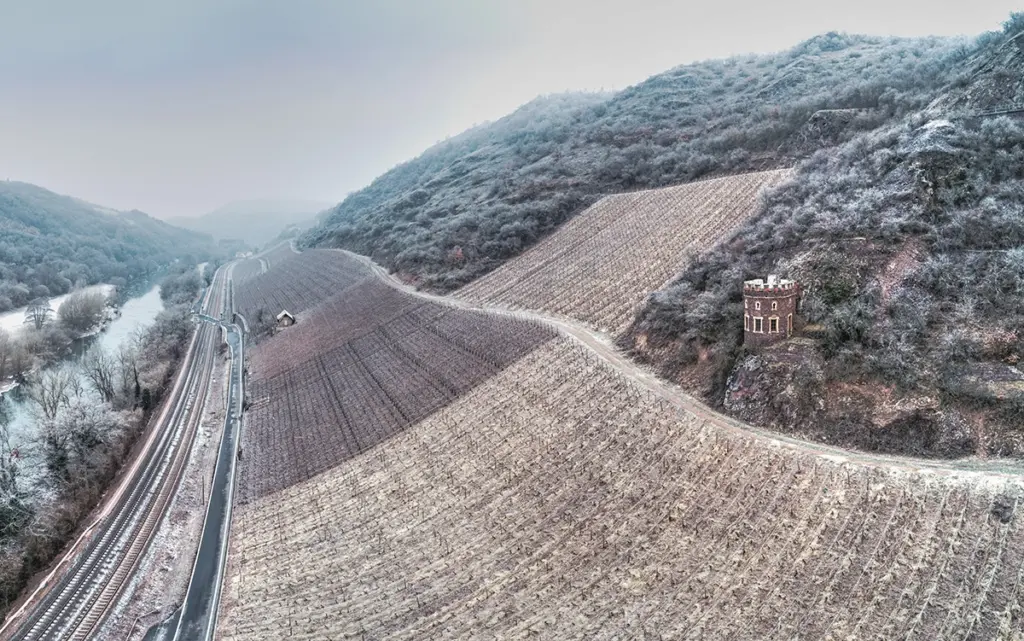
2021 Hermannshöhle Riesling GG ++
Okay Fair & Green member, what’s with the STUPID HEAVY BOTTLES????
I mean really, is there a greater vineyard in the world? Okay, a greater Riesling vineyard in the world?
What, I wonder, do the others do? I mean the reviewers who’ve been doing this for ump-teen years and have (like myself) spent their store of descriptors for this wine. I’m someone who actually dislikes repeating himself, so let me just say what this wine is like in 2021—specifically in 2021.
The aroma is compelling, insanely complex, expressive to a point of brashness.
The body is twitchingly energized—you could say “on the light side,” but you could also say soaring and aerial.
You could wonder, as I do, how a wine with 13% alcohol could also seem to be lighter than air.
If you know these wines, you will be pleased that this ’21 is as delineated and fastidious as always. You sought the Nth degree of complexity, and you shall have it.
You might have expected something more extravagant, but on the other hand you don’t often get to see it etched and chiseled like this.
I might say, if you wanted to grok Hermannshöhle absent anything that could be considered enticing or ingratiating, this would be useful. What the vineyard has to show, it shows here, in the urgent whisper I find so poignant. It’s in the nature of ’21 to emphasize the high tones, and in this case the spices, and among the spices the penetrating ones, but if you know these wines for years and years, it’s fair to ask whether Hermannshöhle will ever be so blatantly visible again. Will you give away a little power to obtain this degree of focus? I will, but that’s up to you.
Meanwhile, I have an empty glass that smells like an amalgam of every great white wine in the world, trilling away for what seems like forever. It’s not bad right now, to be me.
Is it possible to “damage” this wine? I thought I’d try. I’m re-tasting it in the kitchen with mushrooms sautéing in a skillet and a spatchcocked chicken cooking under super-convection, so the room smells like the opposite of Hermannshöhle, and the ambience is all wrong.
Of course the wine stands up. It’s distorted, obviously, and only its high points are showing—but what high points! The wine is indefatigable.
2021 Riesling
This is the (essentially) feinherb estate Riesling, a wine I’ve often thought a serious candidate for best white wine value on earth. In case you’ve forgotten, or—perish the thought—don’t yet know this wine, it’s grown (mostly) on porphyry, and usually establishes a perfect balance. What will it do in the stiff cold breezes of ’21?
It smells beautiful, a little brighter and brisker than usual, more skipping and aerial, less exotic. It’s still wonderfully balanced though on an angular pivot, with more explicit minerality than usual. It tastes as if some slate were in the mix. We also have a balsam-fir note and no small amount of jade-oolong, and star-fruit and Chinese 5-spice. As always, a lot going on.
It’s very much a ’21, with nearly all that implies. Acidity is a character but doesn’t chew the scenery. It’s almost alarmingly salty. Considering how chipper and lyric this is, the volume of spice and umami is more than noteworthy. If it were the first vintage I’d ever tasted I’d feel “Wow, this is excellent quality for an estate-riesling,” but having known it for several decades, I’d say that I like it a ton but I love it more in warmer years.
2021 Niederhäuser Klamm Riesling Kabinett
VDP Grosse Lage. Adjoins the Hermannshöhle, and sits in a concave bowl, partly on a steep slope that traps the heat, and partly on a flat plain below it. Soils are the usual Nahe conglomerate, in this case of porphyry and rotliegend. Right now I don’t know anyone bottling either higher-predicate wines or dry wines of the GG type, though I imagine somebody must be. Helmut Dönnhoff always has a sense of the “talent” of a vineyard, and his working theory seems to be that Klamm is destined for Kabinett.
It leads with the charcuterie note typical for rotliegend, the “sweeter” element (Prosciutto di San Daniele comes to mind), but then there’s a vaulting brilliance carrying all kinds of counter-flavors; white peaches, salts, even ylang-ylang and fir. It shows the ’21 snap, and one “notices” the acidity on the finish. I imagine the Leistenberg would have cast a shadow over it, but I can’t say.
It has a sneaky length, this little guy. It appears to be rather slight at first, as the acids swallow the overt flavors on the first finish, but then it returns after 30 seconds with a complex (if delicate) echo of the porphyry twang, and this grows larger as the moments pass.
So, in effect we have a bright, grippy wine with inferential substance that becomes more explicit the more you taste it. The wine is silvery and a teeny bit snippy, but also peachy and a teeny bit salty. It is “balanced” but one perceives the arrangement of the pieces. Is it super-refined, or is it merely arch? You tell me.
2021 Oberhäuser Brücke Riesling Spätlese +
VDP Grosse Lage. When I tasted it at the winery last May I noted it was “atypically available,” but today it has reverted to its usual inscrutability. I think the clue is in my sense of it being an ur of Riesling, and if that is (at least poetically) valid, then it could be a Riesling that exists before there is language to depict it. Regardless, Brücke is a wine for patient persons. In fifteen years or so, it can offer an experience without any equivalent that I’m aware of.
Like most wines, it displays more from the Jancis glass. This can be a mixed blessing, because part of what’s displayed here is an unseemly acidity, which seems rather a penalty for the taster looking for expressiveness. While it’s more analogue from the Spiegelau, it’s also juicier and more peaceable with those acids.
It presents as on-the-dry-side, which may be illusory, but somewhere within this sphinxlike creature is a kernel of implosive minerality, and a fine and essential beauty. I’m sure these things will blaze forth in time, but how much time, and what might travel along with the blazing….that I can’t predict.
Indeed I find myself asking, have any of you had the experience of encountering a wine that seems to know more than you do? My talents as a taster don’t seem to avail me, somehow, in the face of this numinous yet diffident god. The wine doesn’t offer up its flavors in any manner wherein they might be depicted or listed or even described. It’s like some charged boulder that grants immortality to anyone who licks it, but no one told you to lick it.
2021 Niederhäuser Hermannshöhle Riesling Spätlese ++
VDP Grosse Lage. If this is any kind of consort to the Brücke, it is also the antonym, because it is so explicitly complex (and also complicated) it begs to be deconstructed. But does it, actually, or do we feel that almost addictive impulse, to take a wine so ludicrously intricate and pull it apart so that we might understand it, or prevail over it, or at least fathom it? To Brücke, one must surrender; with Hermannshöhle, one must engage.
This is maybe too simple. That is, it works accurately enough, at least for me, and I know I’m not alone. So, what does this wine give us in 2021, and is it easier or harder to dig through it? I think about vintages like ’98 or 2004 (which was a year with a prominent and lovely flavor of cask) or 2008 or 2016—but ’21 is a light sabre of brilliance compared even to those cool years.
No need to run through the “flavors” again; I’ve done it a dozen times and you probably have too. 2021 renders them so brilliantly that even the ethers have ether. Yet this rides atop something the Germans call “Fond,” which is the core that concentrates the consommé. It’s a little surprising to see that in ’21, but there it is. Just when you’ve almost decided the wine is “pitched high” or “ringing with overtone sizzles” this thing, this element comes along seemingly out of nowhere and stamps its cold little feet on the noble ground.
I’ll observe something I’ve said already about ’21. At times, when its wines are galvanic and amazing, one wonders whether they are delicious. In some instances—note “some,” please—this is beside the point. This is one such instance. You probably won’t smack your lips, and there are better wines to sip while you watch the ball game, but when you taste this, even if you’re not paying close attention, you will know; “This isn’t anything I know from my regular life.” See it for the blessing it is, and all will be well.
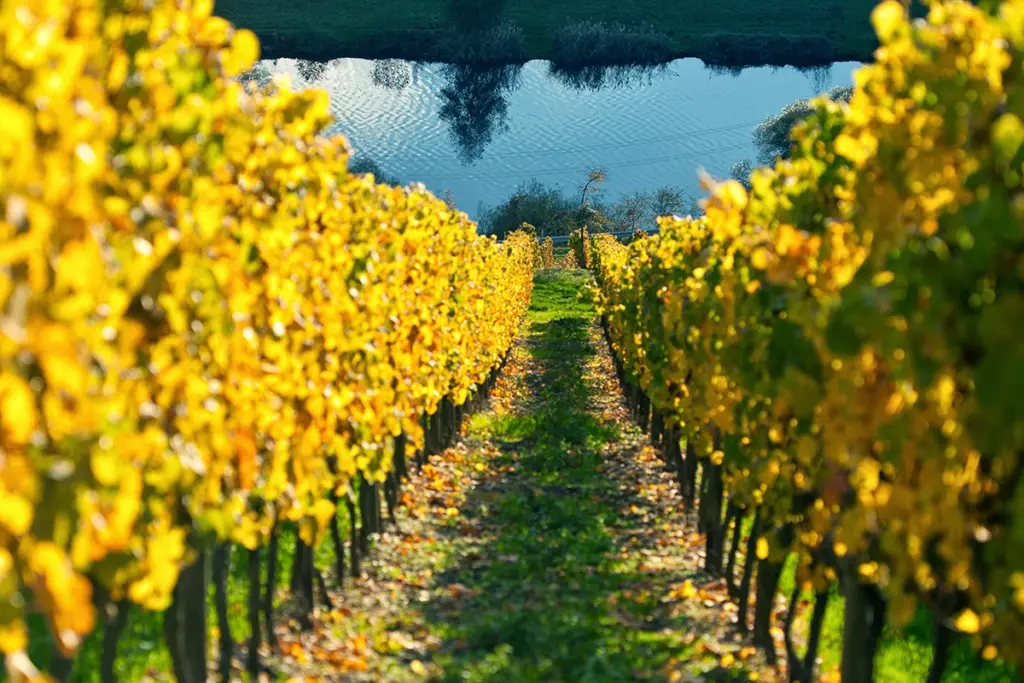
2021 Oberhäuser Brücke Riesling Auslese ++
VDP Grosse Lage. A full 750ml bottle.
When Brücke is combined with a clean botrytis, sparks may fly. And something else I revere about this estate is, there is always a decided climb up to Auslese from Spätlese. An Auslese is never merely a “big” Spätlese, nor is a Spätlese merely a “small” Auslese. The dignities of the types are respected and understood.
For all I am wary of 2021 at times, it has given the occasional Auslese of a type we haven’t seen for decades—if we have seen it at all. It shows an ideal botrytis integrated with a purity of fruit and an electricity of structure—acidity on its best behavior—that create piquant and exquisite masterpieces. This is one of them.
Part of it is a mischievous little sprite and part of it is an indulgent parent who knows there’s only so much trouble the little one can get into. (My little boy had a thing he liked to do when he was toiler-training; he had a toy snare-drum which he would walk around banging the hell out of, yelling/singing “I make pee-e-e-e, in the toy-let!!!” Why am I remembering that now??) Anyway, this is pretty rowdy for such a meditative wine, and it’s pretty pensive for such a hyper wine, and like the best Ausleses it doesn’t feel all that sweet, and it’s also telling me I probably underrated the Spätlese….
2021 Niederhäuser Hermannshöhle Riesling Auslese +++
VDP Grosse Lage.
Dönnhoff can make wines that seem to climb out of the troposphere in which the rest of us all breathe. I believe this, and so I struggle against it, because it’s a way I challenge myself to discard expectations when I taste from an estate that has driven me to ecstasy many times before.
Anyway, <sigh>, this is one of those wines. If this wine doesn’t make you swoon, check to make sure you’re actually conscious.
It has less overt botrytis than the Brücke, and correspondingly more vinosity. It seems to have more low-note Hermannshöhle, from the more volcanic bottom of the vineyard, but I could be wrong. It has the sense of not having been “made in a winery” as much as having materialized out of nowhere in a chapel. It has the thing so many great wines have; the paradox of energy and silence. It is full of salt and savor yet it also feels like it’s standing beneath a shower of aurora borealis.
As clear as it is, it doesn’t explain everything for you. Part of it stays hidden.
But 2021, what do we make of it? The vintage seems to contain either ill-behaved children or glowing laughing gods. Dönnhoff seems to have finessed it much better than most, but I wonder what this vintage will look like in retrospect, and how the wines will taste in 15-20 years.






